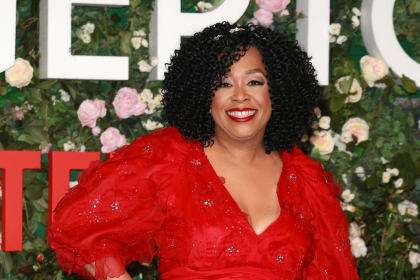In corporate boardrooms and management meetings across America, the phrase “quiet quitting” has become shorthand for a perceived lack of commitment among younger workers. The narrative often portrays Generation Z employees as uncommitted job-hoppers unwilling to pay their dues in traditional workplace hierarchies. However, emerging research challenges this characterization, suggesting that what appears as disengagement may actually represent a rational response to leadership models that have failed to evolve with the workforce.
Recent analysis indicates that Gen Z workers aren’t rejecting work itself, they’re rejecting outdated management practices that don’t align with their values or provide the structure they need to thrive professionally. As organizations struggle with employee retention and engagement, the solution may lie not in criticizing younger workers but in fundamentally reimagining leadership approaches.
The misunderstanding behind quiet quitting
The term “quiet quitting” suggests workers doing the bare minimum, but research examined by workplace analysts indicates a more nuanced reality. What older generations might label as disengagement often represents Gen Z establishing healthy boundaries in environments that fail to meet their professional expectations.
A comprehensive workplace study reveals that younger workers are responding rationally to workplace environments that lack clear structure and meaningful alignment with their values. Rather than simply accepting traditional hierarchies, they’re questioning systems that don’t serve their professional development or personal wellbeing.
“What are we doing wrong?” is the question forward-thinking leaders are asking themselves, rather than blaming young employees for their changing attitudes toward work. This introspection represents a crucial first step in developing more effective engagement strategies that resonate across generational divides.
The formative experiences shaping Gen Z work values
Generation Z has entered the workforce having grown up during unprecedented social and economic upheaval. They’ve witnessed economic recessions, a global pandemic, intensifying climate concerns and social justice movements that have fundamentally shaped their worldview and expectations about work.
These formative experiences have created a generation that prioritizes psychological safety, transparency and fairness in their professional environments. Unlike previous generations who might have accepted opaque management practices or hierarchical structures based solely on tenure, Gen Z employees seek workplaces that provide clear expectations while honoring their contributions regardless of age or position.
This generation has also grown up with mental health awareness as a mainstream concern rather than a taboo subject. They bring these perspectives into the workplace, expecting employers to recognize the importance of wellbeing alongside productivity metrics. When organizations fail to acknowledge these priorities, disengagement naturally follows.
Five critical failures of traditional management models
The disconnect between Gen Z expectations and current leadership practices often stems from operational models designed for different workforce demographics and economic realities. Several key failures of traditional management approaches contribute significantly to younger worker disengagement:
- Ambiguous expectations and feedback: Many organizations still operate with annual performance reviews rather than regular feedback sessions. Gen Z workers, accustomed to immediate information access, find this approach frustrating and insufficient for professional growth.
- Unclear career progression paths: Traditional corporate ladders with rigid advancement timelines feel arbitrary to younger workers seeking merit-based progression. When organizations can’t articulate how contributions translate to advancement opportunities, motivation suffers.
- Lack of purpose alignment: Companies that cannot connect daily work to meaningful impact struggle to engage Gen Z employees who prioritize purpose alongside compensation. This generation expects their professional efforts to contribute to something beyond shareholder value.
- Insufficient autonomy balancing: Micromanagement practices that worked with previous generations alienate younger workers who value independence while still desiring appropriate guidance and mentorship.
- Inconsistent transparency: Organizations that share information selectively or operate with hidden agendas quickly lose credibility with Gen Z workers who expect honest communication about company decisions and challenges.
Rather than suffering silently in environments that don’t meet their needs, Gen Z employees are more likely to disengage or seek opportunities elsewhere. This response represents not entitlement but a reasonable refusal to participate in systems that fail to value their contributions appropriately.
Building bridges through empathetic leadership
To effectively engage Gen Z talent, organizations need leadership models that recognize the changing expectations of the modern workforce. The Engaged Empathy Leadership Model introduced by workplace researchers offers a framework built around three essential elements that resonate particularly well with younger workers.
First, kindness serves as the foundation of effective leadership. Leaders who demonstrate genuine care for team members as individuals rather than interchangeable resources create environments where psychological safety flourishes. When employees feel valued holistically, their engagement naturally increases.
Second, fairness represents a non-negotiable expectation among Gen Z workers. They expect equitable treatment regarding promotions, compensation and opportunities. Organizations with transparent decision-making processes and clear merit-based advancement criteria are more likely to maintain younger worker engagement.
Third, structural clarity provides the framework younger employees need to navigate their professional development. For Gen Z, structure doesn’t mean rigidity but rather clear expectations, consistent feedback and transparent processes. This clarity helps them avoid feelings of stagnation and uncertainty about their career trajectories.
Implementing empathetic leadership in practice
Organizations seeking to better engage Gen Z workers can take several practical steps to implement more empathetic leadership approaches. Regular check-ins focused on career development, not just task completion, demonstrate investment in employee growth. These conversations should include specific feedback about progress toward clearly defined goals.
Creating transparent advancement criteria that focus on impact rather than tenure can address concerns about fairness. When organizations clearly articulate how contributions translate to progression opportunities, younger workers can better visualize their future within the company.
Establishing meaningful mentorship programs that pair younger employees with leaders who exemplify the values of empathetic leadership provides living models of the organization’s commitment to modern management practices. These relationships often become powerful retention tools as they foster connection beyond transactional working arrangements.
The business case for leadership evolution
Beyond addressing generational preferences, evolving leadership practices makes sound business sense. Organizations implementing more empathetic approaches report improvements in productivity, innovation and retention across all demographic groups. While Gen Z may be the most vocal about their expectations, research indicates that workers of all ages respond positively to leadership models emphasizing fairness, transparency and psychological safety.
As labor markets remain competitive, particularly for skilled knowledge workers, organizations that cling to outdated management practices face increasing disadvantages in attraction and retention. The costs of turnover and disengagement far outweigh the investments required to evolve leadership approaches.
Forward-thinking organizations recognize that adapting leadership practices doesn’t represent capitulation to generational demands but rather a necessary evolution to remain competitive in changing market conditions. Those that successfully implement more empathetic leadership models find themselves better positioned to thrive amid workforce demographic shifts and changing economic realities.
The conversation about Gen Z workplace engagement ultimately isn’t about accommodating perceived generational quirks but about recognizing that workplaces themselves must evolve. By embracing leadership models that prioritize kindness, fairness and structure, organizations can create environments where workers of all generations can contribute meaningfully and find fulfillment in their professional lives.















